The perfect marriage of an ESC and motor!
This article was originally published in RC Driver’s July 2016 issue.
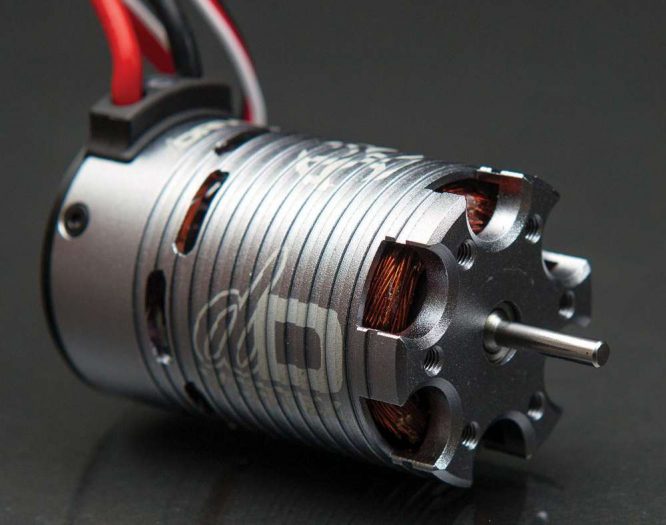
Certain items seem to have a fairly static shape. A tire/rim is round as is a motor, servos are fairly rectangular and speed controls are boxy with a square or rectangular design. Then someone over at Team Orion, rumor has it Oscar Jansen, decided to think outside of the box and had the bright idea to design a small round brushless esc. As if that wasn’t enough he then crammed this small round esc inside the back end of a brushless motor. Yes, we have all seen esc/receiver combo units for some time now, but a motor/esc unit, well that’s just crazy! Named the Vortex dDrive 2700kV, this new release from Team Orion is priced right and easy to install, but how well does it work?
THE GOODS
There are 2 versions if the Vortex dDrive. A 3000kV version and the 2700kV model that I tested. Inside the box is a detailed instructions manual, decal sheet and of course the Vortex dDrive unit. Looking like just a motor with a quick glance, the black and red power wires exit the back end of the unit and end with a Deans type battery connector. Between the 2-wires is a LED status light to help calibrate, program and trouble shoot the Vortex dDrive. Also exiting from the back of the motor is an on/off stitch with programming button and receiver wire. Very simple and straight forward.
Now, let’s talk details. The 540-sized 2700kV brushless motor portion features a 4-pole design. What does that really mean? In technical terms it means it has two sets (so a total of 4) of three phase windings. In practical terms it means that the Vortex dDrive will have plenty of torque, top end speed and is very efficient. The esc portion, located inside the motor can at the endbell is made up of a single circuit board and power FET heatsink that also incorporates one of the 2 bearings that the rotor rides on. The CNC machined aluminum alloy case that wraps around the stator and holds everything together has fins throughout to help the entire Vortex dDrive unit remain cool and operate efficiently run after run.
There are a programming options on the Vortex dDrive to customize the feel for specific applications and personal preference. First is Running Mode where the Vortex dDrive can be set for forward and brake only (a racers setting) and the factory default forward, brake and reverse, ideal for bashers and people who just want to have some fun. Next is Low Voltage Cut-Off. This setting is used to prevent LiPo batteries from being run down too low and thus unusable. There are 6 options here; no cutoff, the factory default 3.0V per cell, 3.2V per cell and finally 3.4V per cell. The third option is the Start Power (sometimes called Punch) that regulates how much power is sent to the wheels as soon as the throttle is pulled back. Options here are level 1 (a soft setting), the factory default level 2, level 3 and level 4 (a strong setting). Max Brake force, the amount of stopping power sent to the wheels when full brake is applied, ranges from 25%, the factory default 50%, 75% and 100%. Lastly there is Motor Rotation direction; the factory default is counter clockwise while as you probably guesses option 2 is clockwise. These settings can be changed fairly painlessly by way of the programming button on the on/off switch.
MANUFACTURER: Team Orion
PRODUCT: Vortex dDrive 2700kV (ORI28313, $114.99)
SPECS
INPUT VOLTAGE: 2S LiPo (7.4V), 6-7 Cell NiCD/NiMH (7.2v – 8.4V)
DIMENSIONS: 36 mm x 58 mm
SHAFT LENGTH: 15mm
SHAFT DIAMETER: 3.175 mm
WEIGHT: 221g
DIRECTION: Forward/brake, forward/brake
CURRENT: 45A kV (RPM/V): 2700kV
POLES: 4
WIRES: 14AWG silicone insulated
CONNECTOR: Deans high current connector
WHAT WE LIKED
• Easy to install
• No soldering required
• Smooth throttle feel
• Good torque
• Easy to calibrate
• Fairly easy to program
• It’s splash proof so no need to steer clear of puddles
• Did I mention that is it easy to install?
WHAT COULD BE IMPROVED
• Would like it to be 3S LiPo (11.1v) compatible
• Would like to see a PC programming option
BEFORE YOU HIT THE TRACK
Installation of the Vortex dDrive ridiculously easy. First, remove the old motor and esc from the vehicle. When doing this it is always a good idea to clean your vehicle and check for any signs of wear and tear. Next, install the Vortex dDrive just like you would install a standard brushless motor; the most crucial part of this is setting the gear mesh. If it is too tight the drivetrain will bind and run inefficiently. If too loose, there is a good chance the spur gear will strip out. Now connect a battery to the Vortex dDrive and turn on your transmitter while holding the programming button down. This will cause the Vortex dDrive to go into calibration mode. You’ll know the unit is in calibration mode because the red LED light, located between the red and black wires, will start to flash. Next press the button again to set neutral; you’ll know this setting has been saved when you see a single green LED flash. Next pull full throttle and press the button; you’ll know this setting has been saved when you see a 2 green LED flashes. Lastly apply full brake and press the button again; you’ll know this setting has been saved when you see a 3 green LED flashes. Upon completing calibration the Vortex dDrive will run for 3-seconds so make sure the wheels of your vehicle are off the ground.
PERFORMANCE
I the 2700kV Team Orion Vortex dDrive system into my well-loved ECX Torment 4WD SCT. Total install time was no more than 15 minutes with most of that going to the removal of the old electronics. I then charged up a 2S Team New Wave LiPo battery pack and headed out for some fun on a stone dust parking lot. When I pulled the throttle on the Spektrum DX2E transmitter the tires on the Torment 4WD SCT wasted no time in kicking up some roost as the truck took off and reached full speed in the blink of an eye.
I took a few passes on the loose parking lot and up and down my street to get the general feel for the Vortex dDrive system in the Torment 4WD SCT then brought it in for a quick inspection. With the motor and esc so packaged altogether I wanted to be sure things never got hot even though overheat protection is a standard feature. The Vortex dDrive was still cool after 3-4 minutes of use, a very good sign that the stock gearing I carried over from the stock electronics was a good fit for the Vortex dDrive. If the unit Vortex dDrive was too hot I would have used a smaller pinion gear and it I felt the Torment was too slow and the motor was cool I would have gone up a few teeth on the pinion gear to go faster. I headed back outside for some more fun, and really tested the braking as I would stopped hard a dozen or so times after a speed run. The braking strength was consistent each time without fading. Even better, the Vortex dDrive, only got moderately warm. After 10 or so minutes of fun on asphalt, dirt, a stone dust parking lot and even some grass the battery started to fade so I decided to shut down before the low voltage cut off kicked in. A common complaint people have with sensorless systems like the Vortex dDrive is that they are not smooth when accelerating from a dead stop. Even when the Torment was rolling backwards and grabbed the throttle hard the Vortex dDrive propelled the Torment 4WD SCT forward without hesitation. Additionally, the Vortex dDrive has excellent mid-range throttle feel, perfect for jumping, navigating tight spaces and rough terrain.
CONCLUSION
When Team Orion first announced the Vortex dDrive I was rather skeptical. Putting a motor and esc together just didn’t seem practical and even if it worked, I didn’t think it would perform well. After using my Vortex dDrive for some time now my initial feeling has been proven wrong as this cool little unit is all it’s advertised to be and perhaps a little more. Costing less than purchasing a separate motor and speed control, and very easy to install and set-up, many hobby shops are going to have a difficult time keeping a good supply of these in stock as they are sure to be a favorite for people looking to upgrade RTR electronic packages.
LINKS
Team Orion, teamorion.com
 RC Driver The Best In RC Car & Truck News, Reviews & Video
RC Driver The Best In RC Car & Truck News, Reviews & Video 


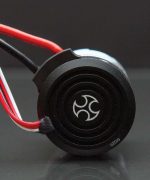
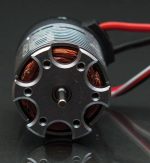
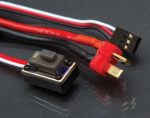
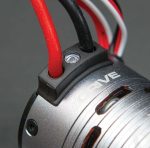






OK guys–we’re waiting for some long term reviews = after weeks and months–do these things hold up?!?
Where can I find a programming manual for my ddrive vortex?